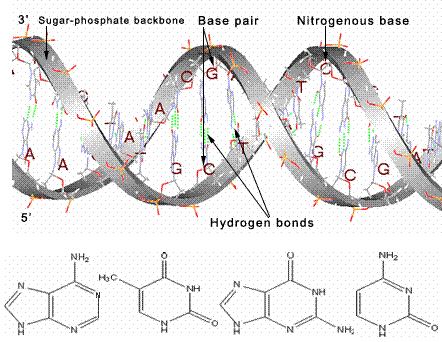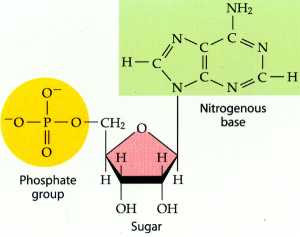|
A gene is a segment of nucleic acid that contains the information necessary to produce a functional product, usually a protein. Genes consist of a long strand of DNA ( RNA in some viruses) that contains a promoter, which controls the activity of a gene, and a coding sequence, which determines what the gene produces.

The genes are made up of a coding alphabet of 4 nucleotides made up of 4 bases:- Adenine(A), Thymine (T), Guanine (G) and Cytosine (C)
The bases Adenine(A) and Guanine(G) are Purines; while Thymine (T) and Cytosine (C) are Pyrimidines.
Genes are poly-nucleotides. Each nucleotide is made up of a base group, a sugar and one ore phosphate groups

The sugar group forms the backbone of DNA. The phosphate groups are responsible for linking one nucleotide to another. The nitrogenous bases of nucleotides face each other and form Hydrogen bonds with their complimentary bases. A is complimentary to T while G is complimentary to C.
A forms 2 bonds with T while G forms 3 bonds with C. Hence a G=C bond is thermally more stable than an A=T bond.